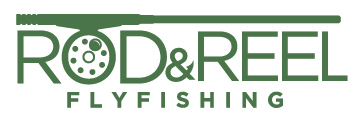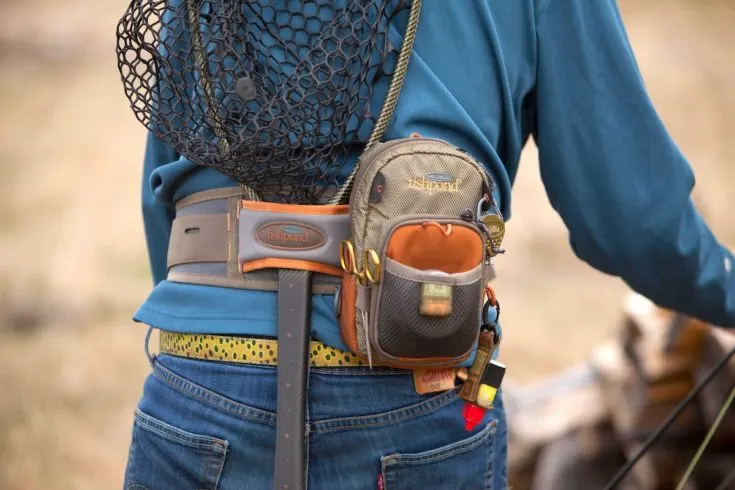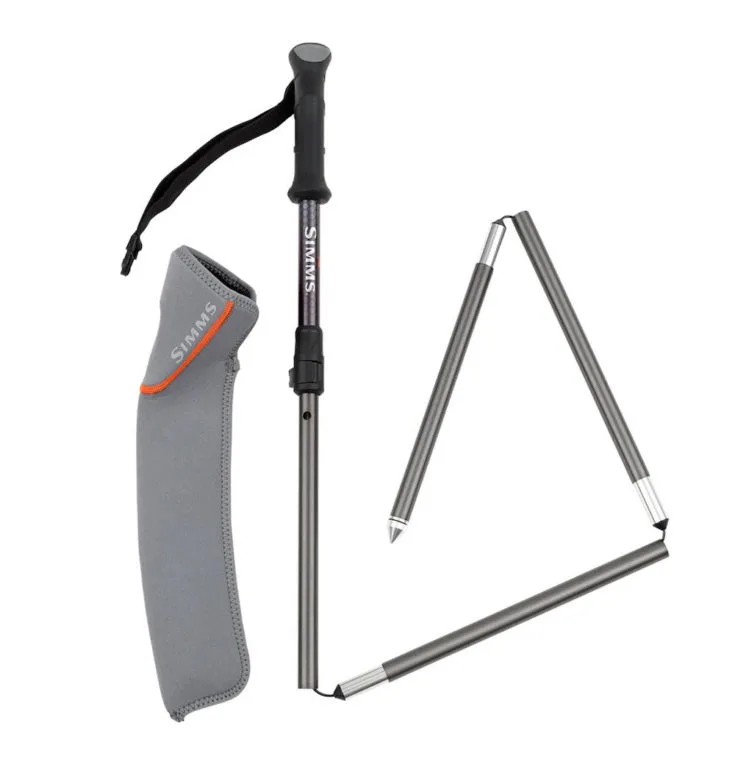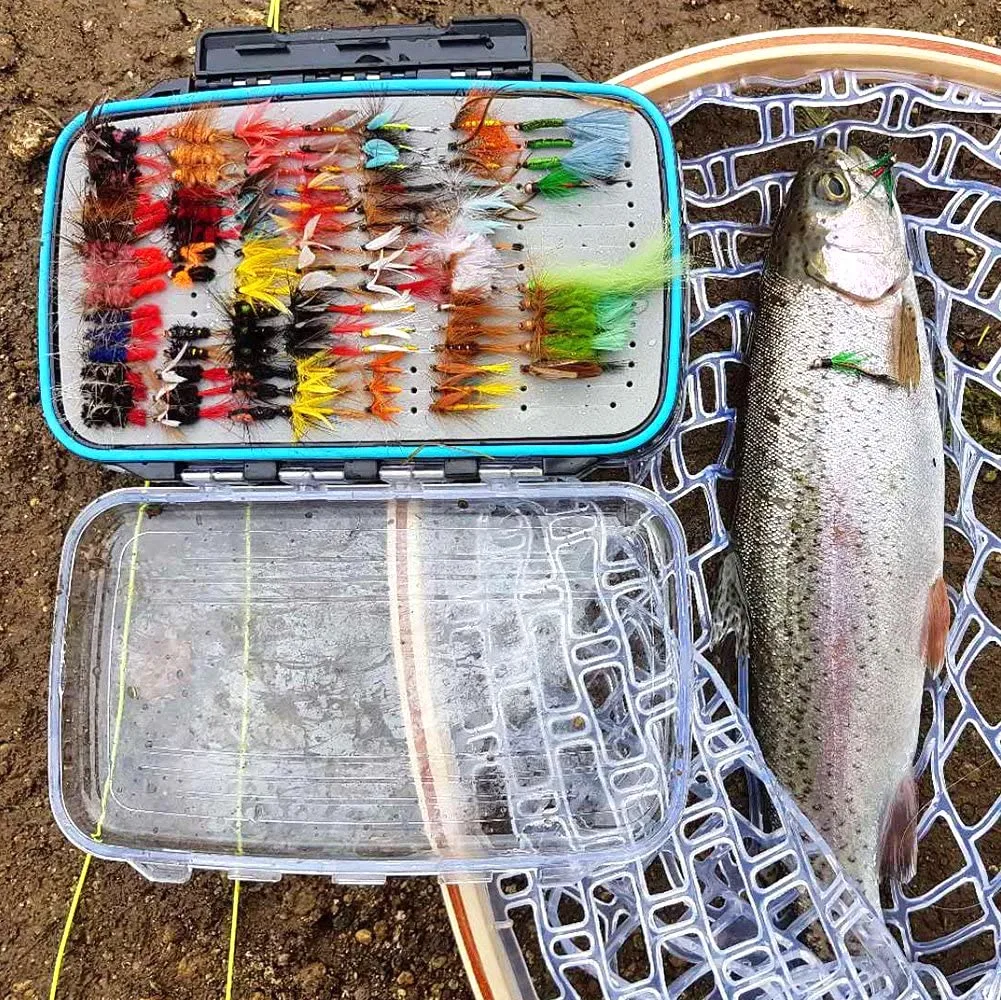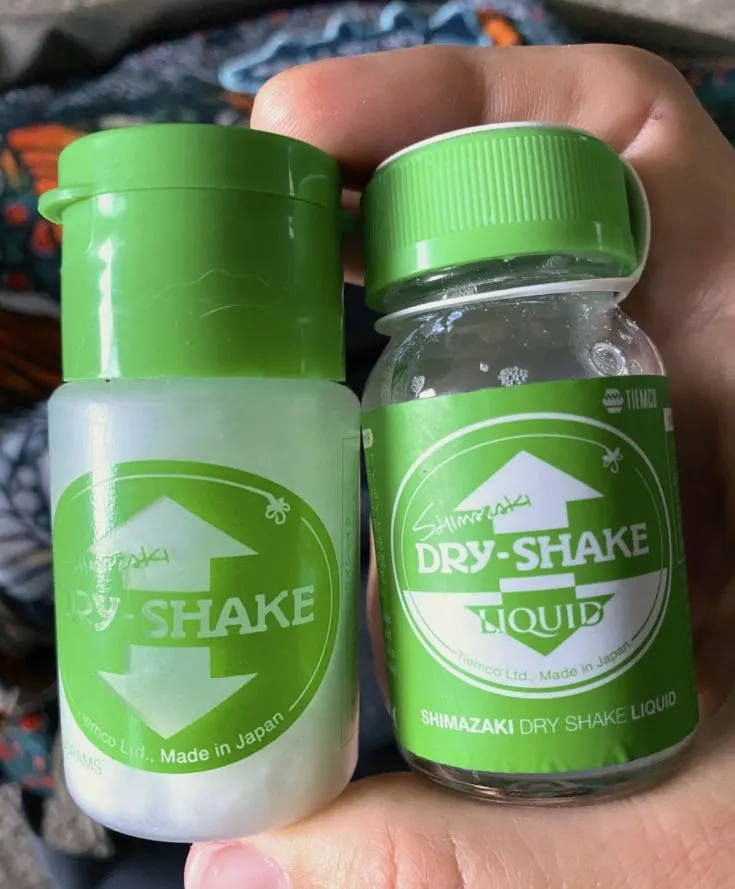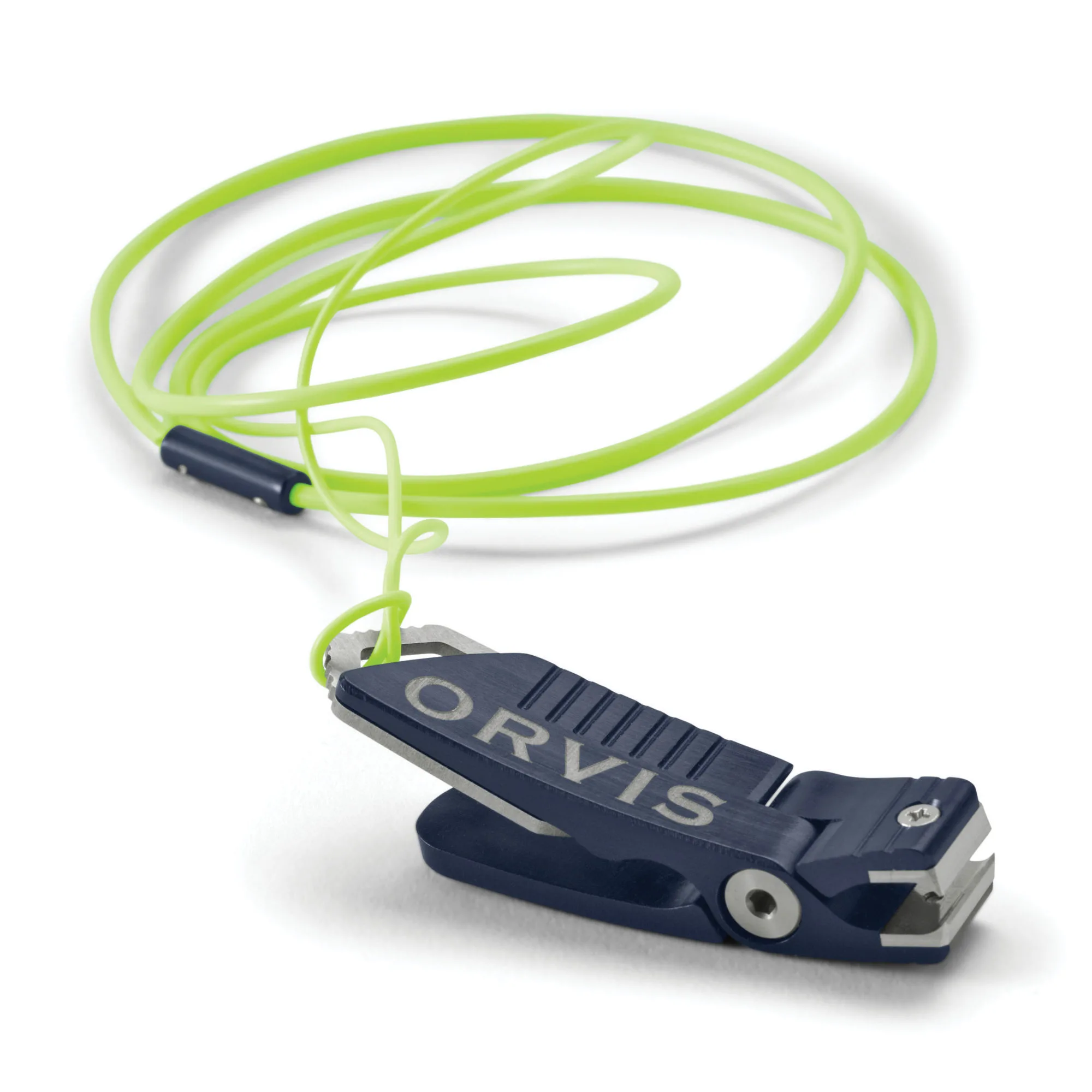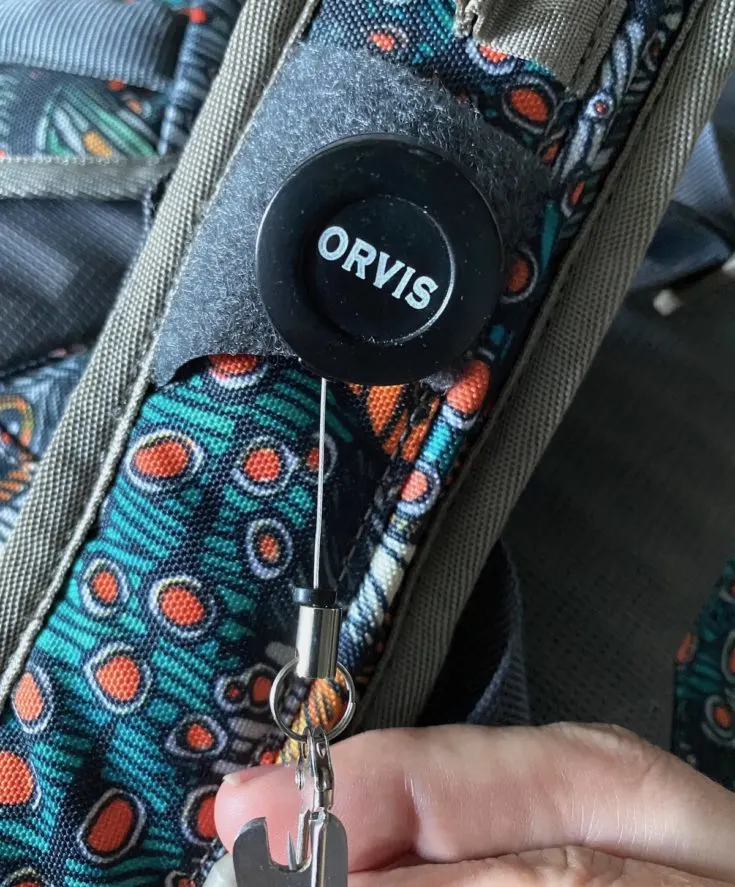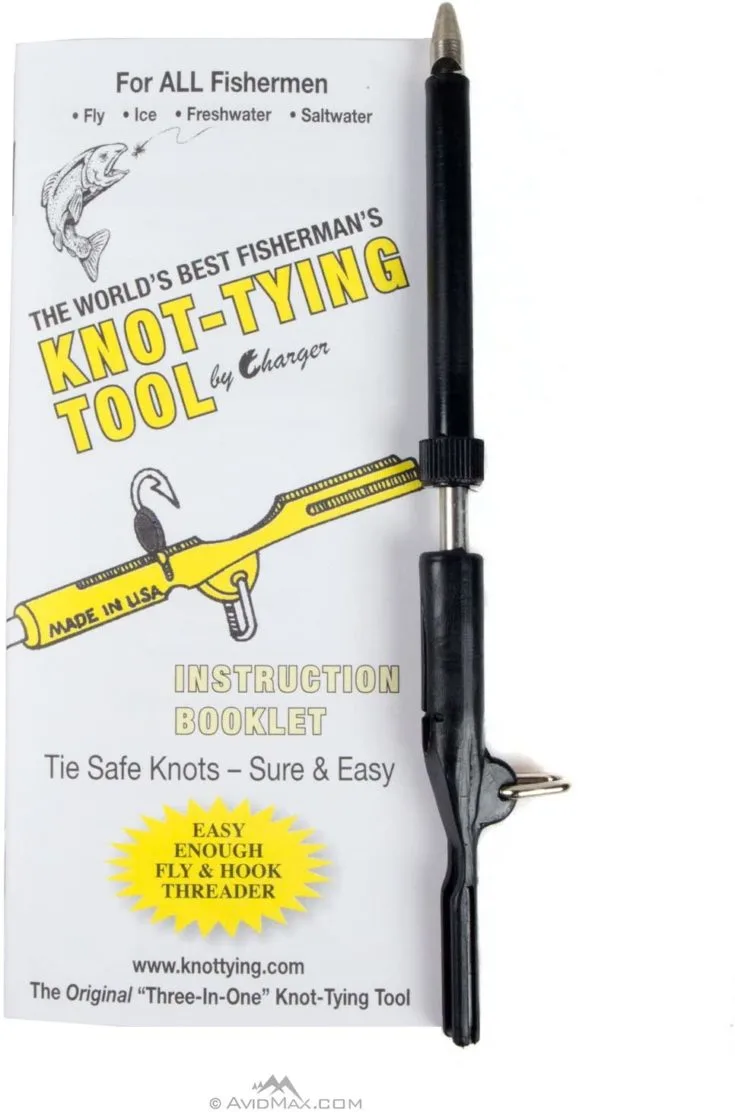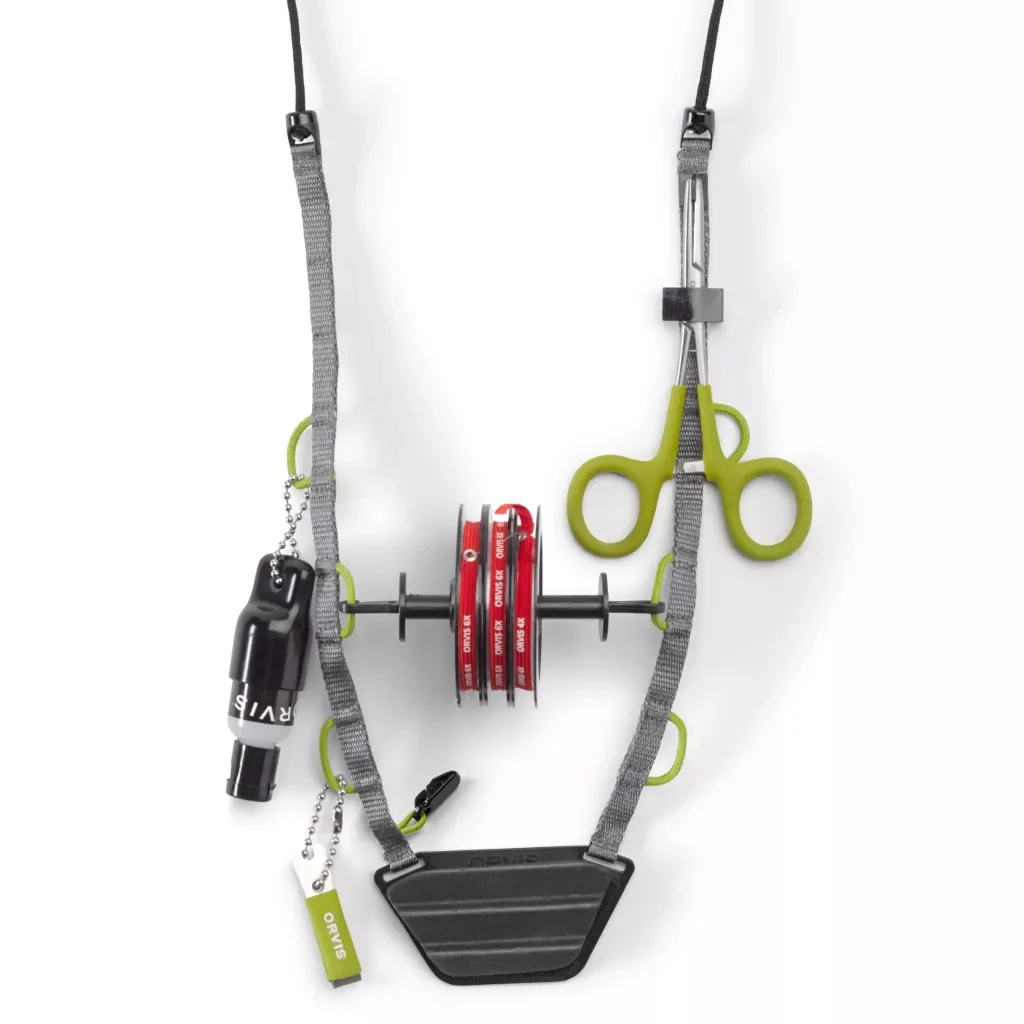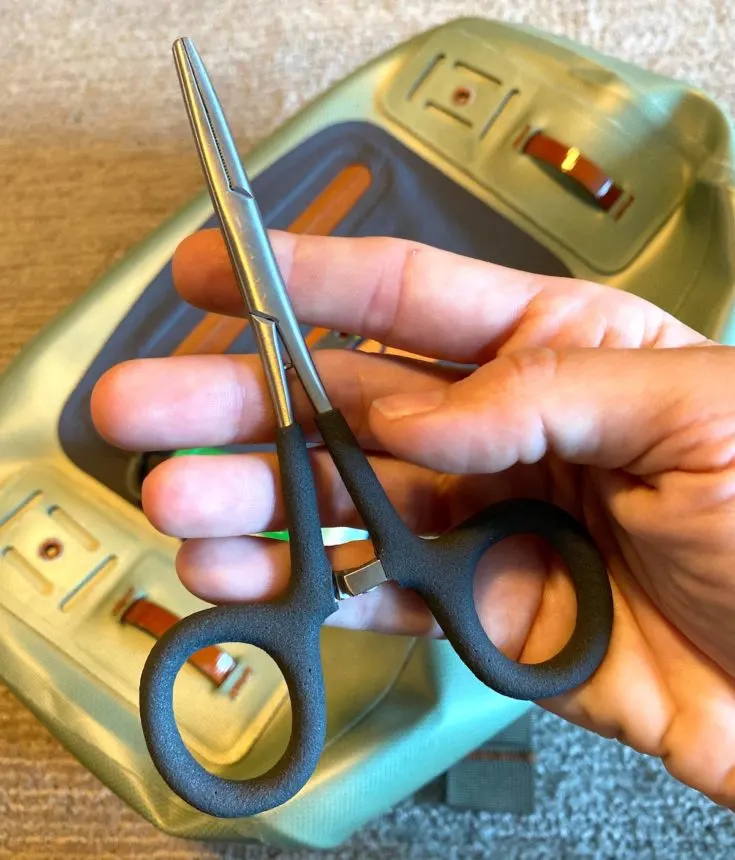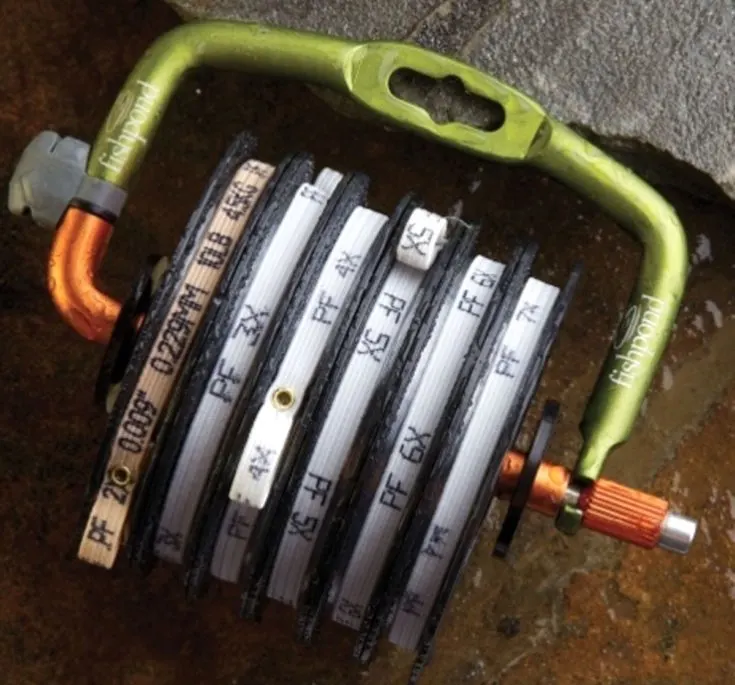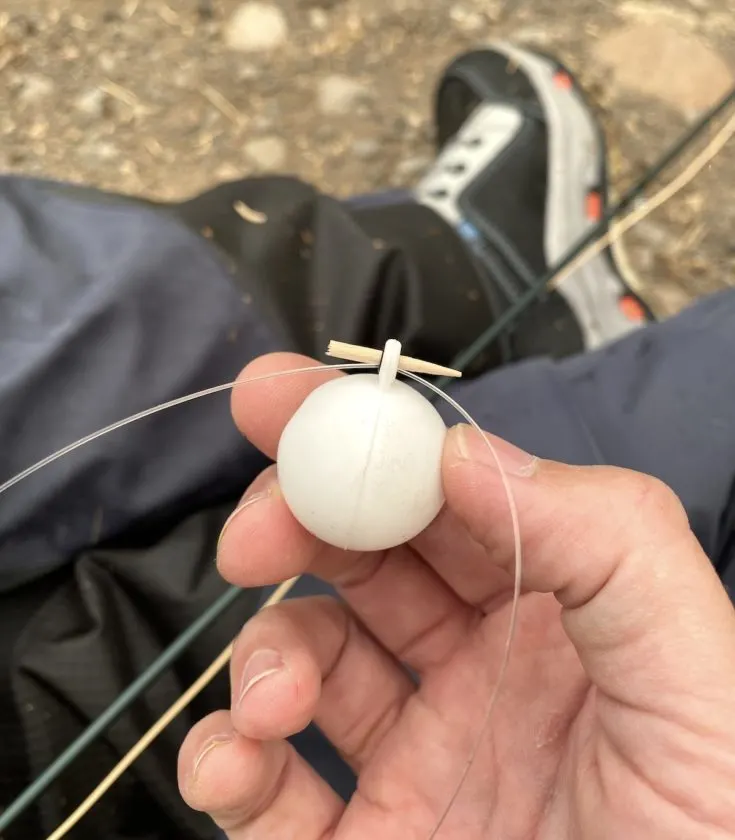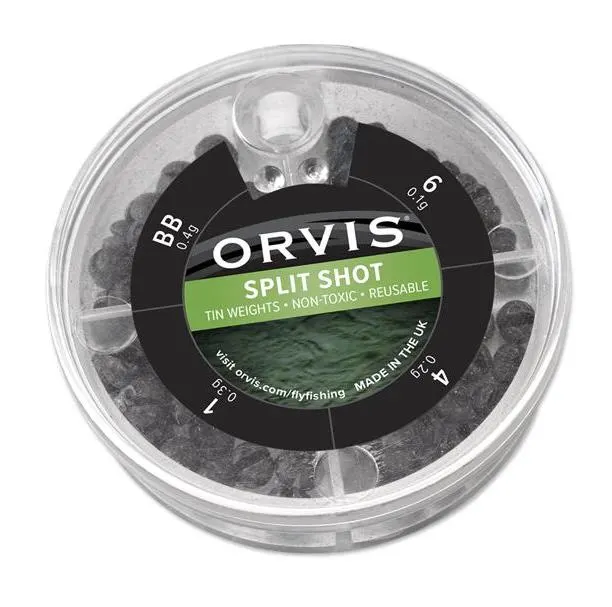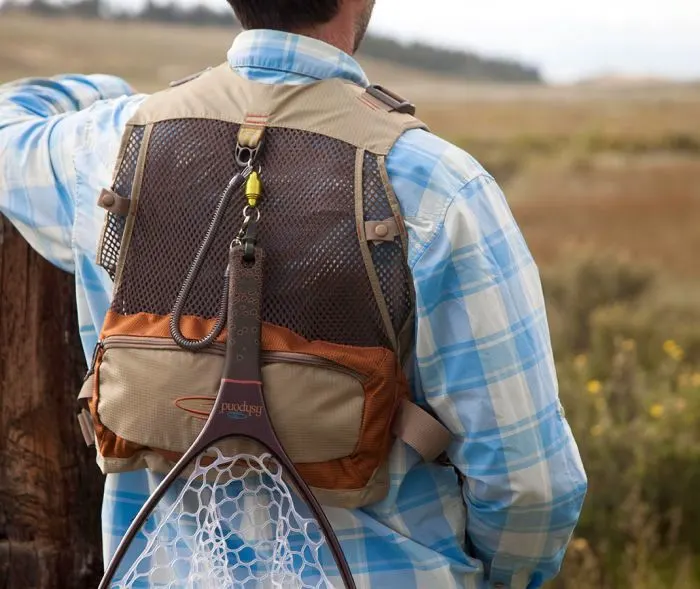There are a lot of tools used in fly fishing, but what do they do? Here are the top fly fishing accessories and how each of them are used.
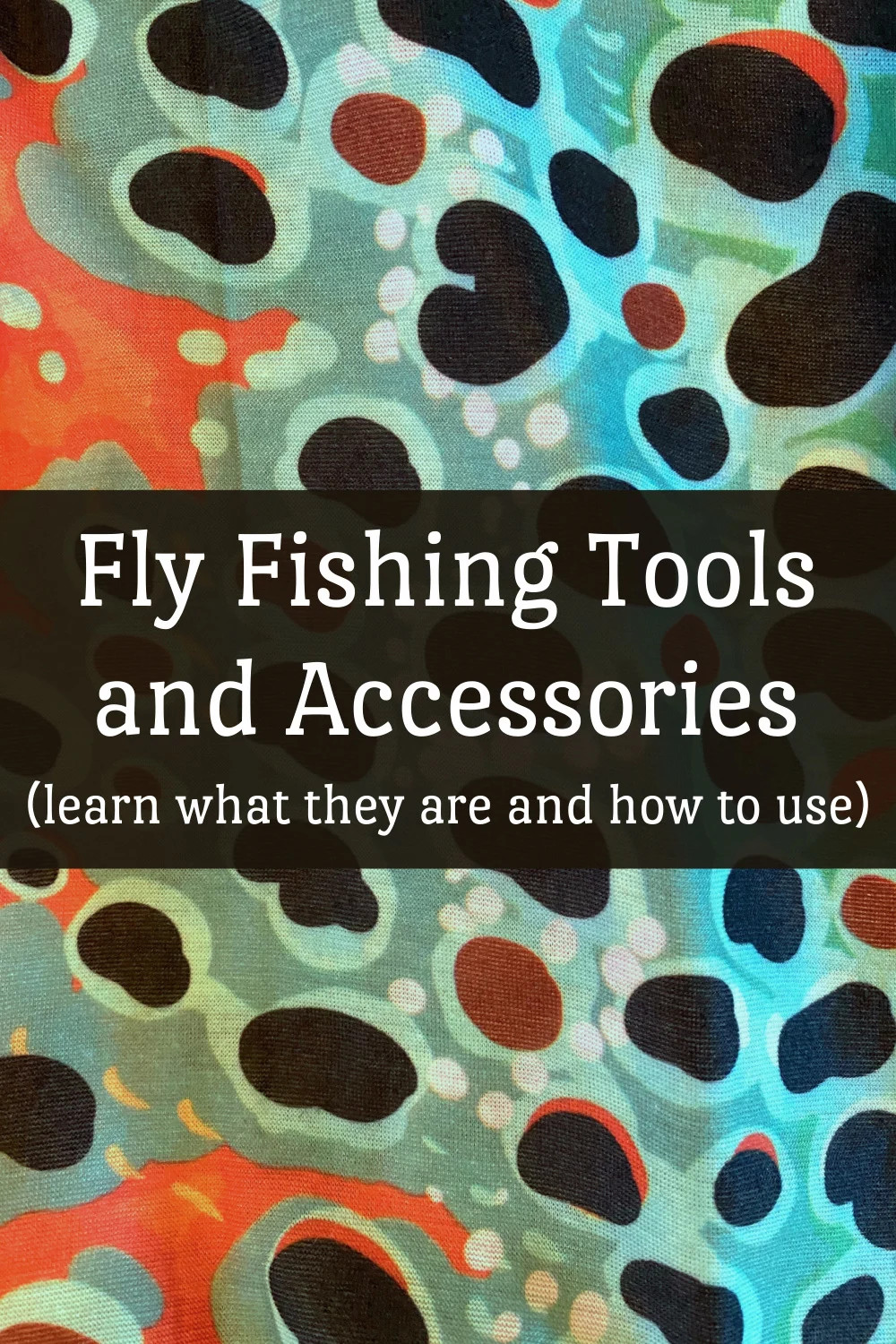
My first fly fishing purchase was waders. On my first trip ever, I rented wading boots and waders (and felt like Ralphie’s brother from A Christmas Story) as well as borrowed a fly rod. All I knew at that point was that you needed the things I was wearing, plus a rod, and maybe a bag for your beer and sammich afterwards.
Of course I saw some fly fishing tools being used, but I didn’t really know what they were. Or what they did. So I proceeded to buy waders (I have the Patagonia Swiftcurrent), boots (Korker’s Buckskin Mary), and a rod (Douglas DXF). I held off on other fly fishing essentials for a bit so I could get used to the basics.
It wasn’t until I went to the Orvis fly fishing school that I started poking around and checking out the fly fishing accessories available in a fly shop. That’s a little bit of a hint that you’re liking your new pastime, by the way. You start looking for more goodies to buy (I can’t be the only one?).
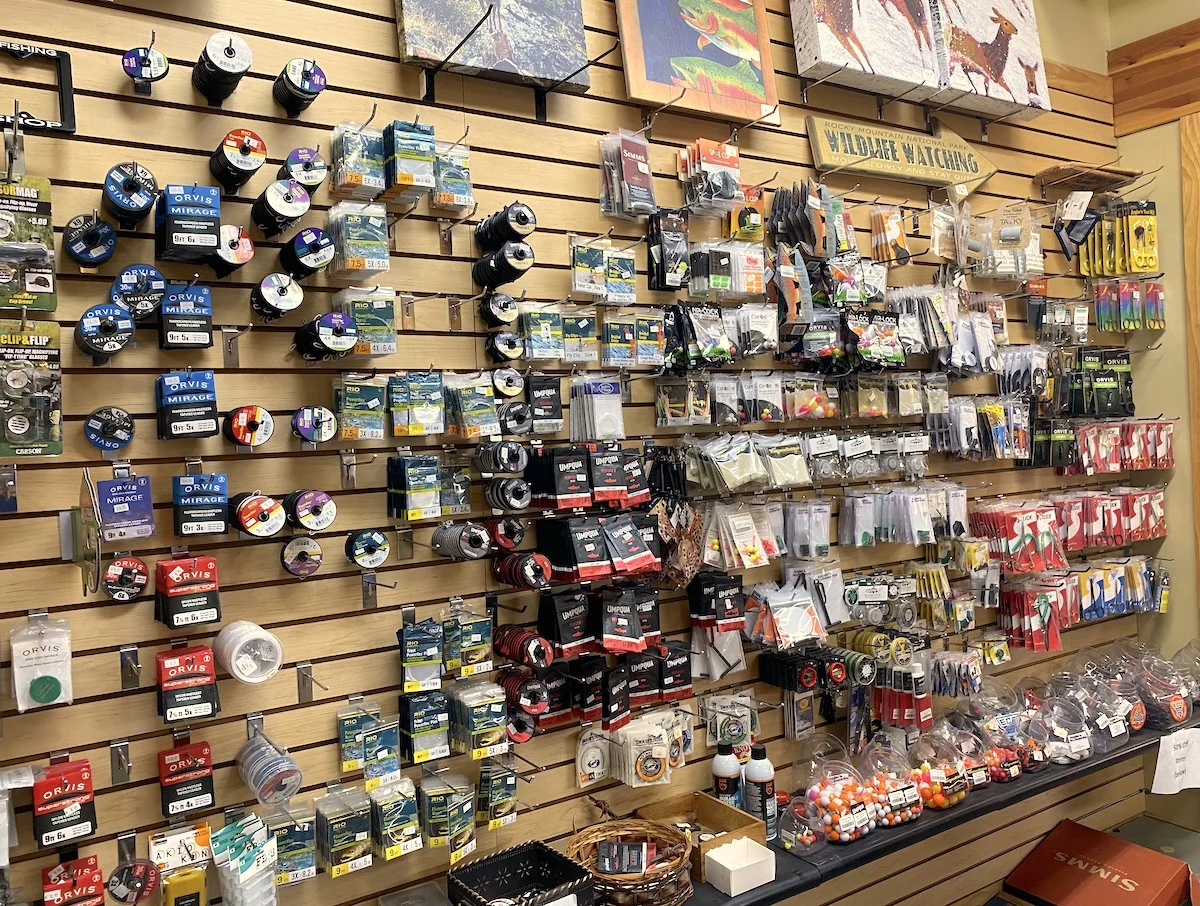
Let me pause for a second to let you know what an easy sale I am if I’m starting a hobby. I don’t go for the most expensive stuff, but I don’t necessarily go for the cheapest either. I also want to “have all the things” due to my excitement.
So during fly fishing school, I asked what the most important fly fishing accessories were. Then my new friend and fly shop owner Mike grabbed several things off the rack and threw them into my pile of purchases. I had no idea what any of them did. Yet I happily shoved my chip into the little reader and signed away.
I don’t know what it is, but I know I need it. Right?
LIfe has changed significantly since that time. Now not only do I know what the tools and accessories are, I actually use them on fly fishing trips! And I’ll be honest, I guess I haven’t started a hobby in awhile. I definitely experienced a thrill when I busted my nippers out of my bag for the first time.
If you’re brand new to the sport like me – or maybe you’ve never picked up a fly rod and are here for research – here are the tools and accessories I’d recommend checking out on your fly fishing journey. While there are plenty of other items made for a variety of purposes in the fly fishing world, these are some of the most common you’ll see.
Not every fisherman will want to use everything I’ve got listed below. As you find your groove fishing, you’ll also find the accessories that work best for you. You’ll try things, and you won’t like them. You’ll also find some tools you can’t live without. This is just an introduction!
Fly Fishing Accessories
What do you need on the river or lake besides your rod and reel? Check out this list of useful fly fishing tools and accessories, and learn what each of them does below.
Wading Belt
Many waders come with a belt attached, but the belt is typically a very simple webbed strap with a buckle. If you're looking for additional features (back support, attachment points, and slots), you will want to check out a wading belt. They also come in handy when you are simply wet wading or doing a quick fish and don't need a bunch of gear.
Wading Staff
How are your river walking legs? Mine are still developing! For those who need a little bit more confidence when walking on rocks, a wading staff can help your stability. This is also great if you have any injuries or other orthopedic issues that might need some backup protection. The great thing about most wading staffs is that they retract and fold up so you can easily carry them in your fishing bag.
Fly Box
I'm sure that even if you've never fly fished, you've seen a fly box before! There's hard a more iconic symbol of fly fishing. As your fly collection grows, you're going to need a place to store them. There are many styles of fly boxes including those with flippable pages, waterproof shells, storage compartments, and more. Keep your files together with a box . . . and more importantly, place your information somewhere inside the box in case you happen to lose it.
Powder and Liquid Floatants
As you're fishing, your flies continue to get wetter - compromising their "floatability" and position in the water. It's great to start with a gel or liquid floatant for your initial cast. Then you can move on to drying the flies out (shirt sleeve, towel, etc.) and applying dry powder to encourage hydrophobicity (repelling water). Keeping your flies in the correct position in the water is important if you actually want to catch something!
Nippers
You'll figure out shortly after tying your first knot that you need to be able to trim the extra filament quickly and easily, and that's where nippers come in handy. Typical nippers are made of stainless steel with a rubberized grip so your fingers don't slip when on the river. You'll use these regularly to "nip and clip." Keep them in reach and accessible with a lanyard or zinger.
Zinger
When I first saw zingers, I thought they looked like badge holders that software engineers would use to get into their office. Why would I want one for fly fishing? But they're actually quite a useful fly fishing accessory. You can pin or attach them almost anywhere (most bags have loops or places for them). They hold items such as knot tyers and nippers, making small things easily accessible so you don't have to root around in your bag while the fish are passing you by.
Knot Tying Tool
Not all of us were graced with slim, sexy fingers that can tie knots with ease. After a day on the river you might find that your fingers are tired, or that you simply have "fat finger syndrome" and can't tie a knot to save your life. In that case, a knot tyer might come in handy.
Neck Lanyard
There are a variety of fly fishing lanyards available on the market, all having one thing in common - they organize your fishing tools around your neck and in front of your chest. Some of them are more simple (only holding one tool), while others (like the one pictured) are more involved. If you like all of your fly fishing accessories easily accessible, you can get a lanyard that holds your forceps, floatant, tippet, nippers, and more. A lot of them also have clips to keep them secure when bending over so they don't get in your way.
Scissor Forceps
Are you performing surgery? No. But you can pretend you're a fish doctor with these cool hemostat forceps. But seriously, they help with tasks like flattening barbs on hooks (for proper catch and release) as well as removing hooks from fish's mouths. Many forceps also have scissors for cutting line as well as a hook and eye cleaner between the two handles. They are specifically made for fly fishing with no slip grips.
Tippet Holder
It's not easy to access tippet "on the fly" when it's stuck down inside your pack. Or, if you have a wading belt or smaller bag, you might not even have a place to store your tippet. That's when a tippet holder comes in handy. It's a separate accessory that allows you to store tippet spools with ease. There's a loop for hooking to your belt, bag, lanyard, or vest. And if you lose your nippers, a lot of tippet holders have built in cutters (I recommend looking for this feature).
Strike Indicators
Don't ever call these bobbers - it's a bad idea. In fly fishing, these little plastic balls are called strike indicators! They do exactly as described. They are meant to move in the water when you have a fish on your line, "indicating" that you have a strike and it's time to set the hook. They are easy to cast (very lightweight) and you should look for the kind that stay in place. Or you can use a hack as shown in the image: a toothpick!
Split Shot
One of the keys to catching fish is to get your fly in the "strike zone" so that the fish will bite it. When you have a fast moving river or a deep body of water, split shot is cool because it allows you to add weight to your rig, making your fly pattern sink faster in the strike zone. Split shot typically attaches to tippet. Look for the non-toxic version to help preserve our river friends.
Net Release and Retractor
As a newbie fly fisher, there's always a bit of panic sets in when I catch something. How am I going to access the net as quickly as possible, bag the fish, and do it all without harming my catch and sending everything down the river? Meet the net release and retractor. This tool keeps your net attached to you, but also allows for a quick release with the magnets when it's time to net up. It's nice because the magnet strength allows you to easily re-attach the net to your gear as well. I see fishermen using this for a variety of things, not just nets. This release and retractor works for anything you want to keep at arm's length and do a quick grab.
What fly fishing accessories are most important to you? Which have you tried and which are you looking forward to trying? I’d love to know in the comments!
